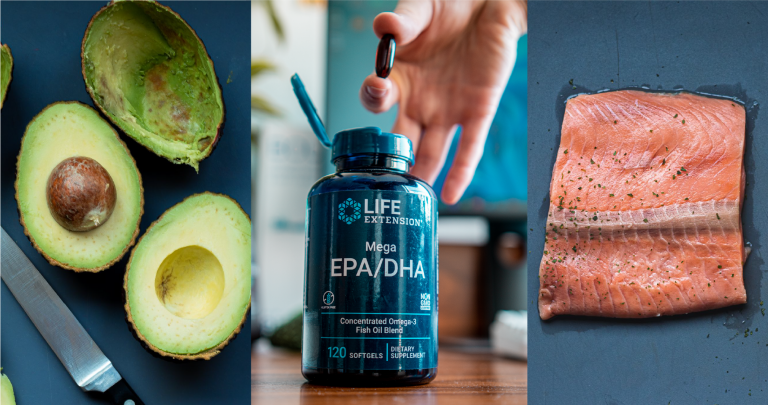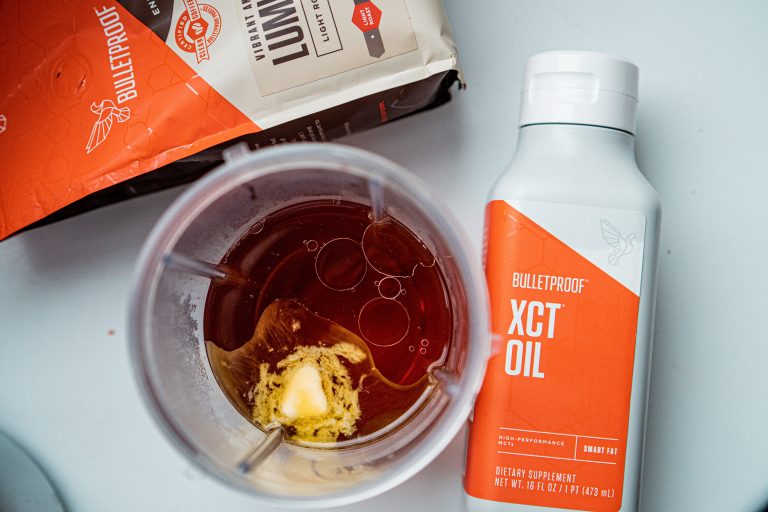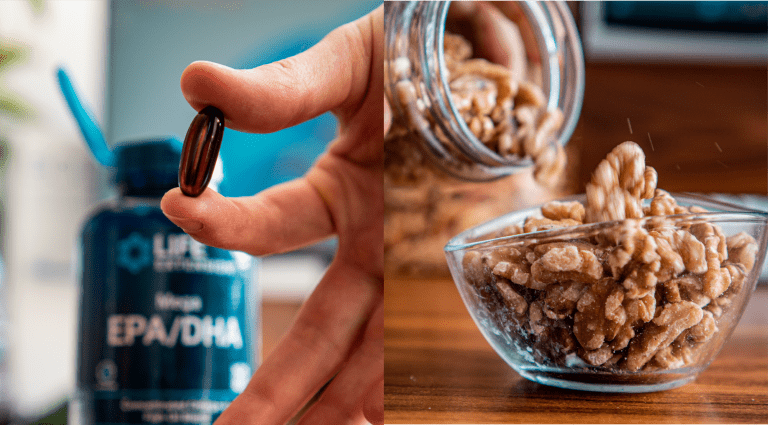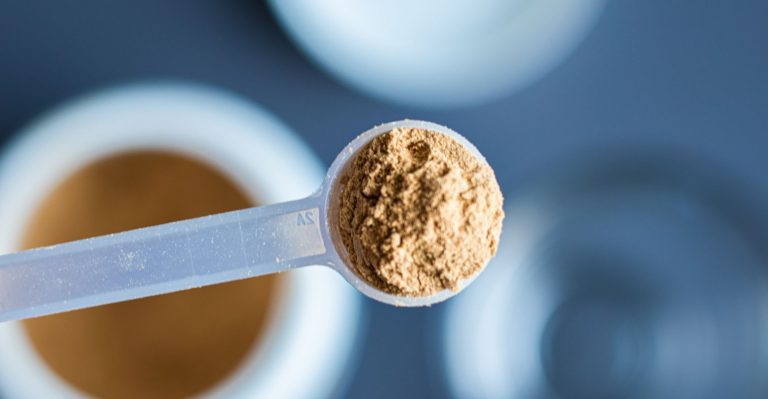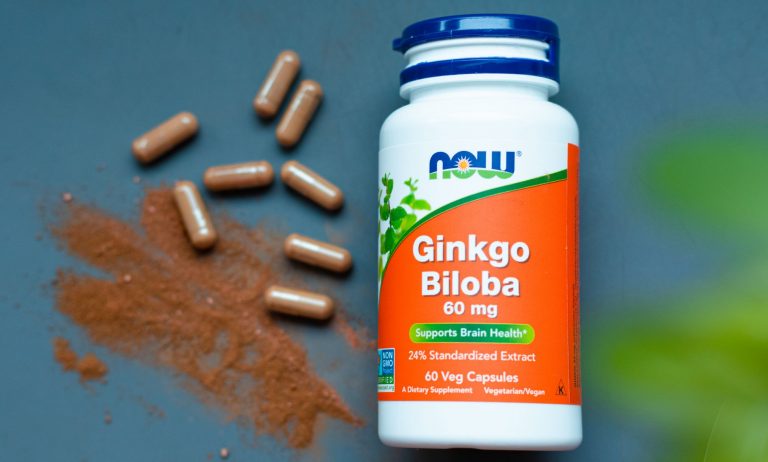Top 11 Foods Rich in Antioxidants: Spices, Berries, Coffee, and Greens
Antioxidants are healthy for you, we’ve all heard that (Peter, eat your greens!). Instead of discovering the top antioxidant supplements, today’s goal is to discover the top foods rich in antioxidants. Antioxidants have potent anti-aging effects, as they work to combat oxidative stress.
Antioxidants are essential for maintaining cell integrity, DNA repair, and regeneration. This translates to skin health, supports various bodily functions, may reduce the risk of many chronic diseases, reduce joint pain, improve brain function, etc.
Ready to extract the most potent antioxidants from these 11 superfoods? (It’s 22, couldn’t keep the list that short).
What are Antioxidants?
Put simply, antioxidants are natural molecules that fight oxidative stress. Just as water smothers fire, or base buffers acid, antioxidants work to reduce free radical damage. They are “anti-oxidants”.
By doing so, antioxidants have the potential to reduce the damage of free radicals in our bodies. Oxidation is aging. Antioxidants it’s anti-aging, simple enough?
There are thousands of different antioxidants. We can find many antioxidants in foods, both from animal and plant-based sources. The body can also make a very powerful antioxidant itself, glutathione.
The point of increasing antioxidants is to neutralize the oxidative damage done by free radicals. To do so, we need to have enough antioxidants to free radicals ratio. Eating antioxidant-rich foods is one great way to do this.
Comparing Spices, Strongest Antioxidants, and Synthetic Drugs to Food Antioxidants
It isn’t about finding the most powerful antioxidant in the world. We won’t be talking about Resveratrol, Astaxanthin, or Quercetin. Per 100 grams of spices, matcha tea, or cloves we’ll find very high antioxidant content, superior to that of some of the functional foods like berries, nuts, or greens.
Why not aim for the highest antioxidant? Because the effects of antioxidants are short-lived. Getting an extremely high dose of antioxidants will probably be filtered and wasted.
Instead, it’s much smarter and more practical to focus on shifting our diet, to increase the regular intake of foods that are relatively rich in antioxidants.
Another interesting point is, that although you might see spices, oregano, basil, rosemary, and coffee cherries as extremely high in antioxidant content per 100 grams, you aren’t going to consume that much of them. Instead, you’ll more practically consume higher amounts of foods like berries, nuts, greens, fruits, etc.

Free radicals and Oxidative Stress
Free radicals or reactive oxygen species ROS are unstable molecules with unpaired electrons that look to bond to other atoms. By doing so, they cause oxidative stress which can cause DNA damage.
Many diseases originate from chronic inflammation. Guess what causes it? Oxidative stress. So, think of it as a cycle of free radicals, oxidative stress, chronic inflammation up to DNA damage, and disease development.
Just by performing the basic functions, our bodies will create free radicals, which is completely normal. The body also has its antioxidant defense mechanism to balance this damage out. As we age, our ability to detox or fight oxidative stress diminishes, so we oxidize or age at a faster rate.
Other factors known to increase oxidative damage are smoking, pollution, sun exposure, exercising, fried foods, radiation, etc. As we go on living, we’ll take more hits. Some of these activities can improve our ability to detox, so they aren’t bad on their own, such as exercise.
How Antioxidants Function
Antioxidants are the main weapon against free radicals and oxidative stress. They work by donating electrons to unstable free radicals, reducing oxidative stress. This is basically what anti-aging is about. Increasing the amount of antioxidants, so you can combat stressors.
Pro Tip
By increasing our antioxidants with food intake, we can increase antioxidants. By training, we can improve our body’s ability to fight stress and be more adaptable. Finally, taking fewer hits in terms of radiation, and pollution, quitting smoking, and avoiding fried foods will result in less oxidative damage to start with.
FRAP Test vs. ORAC Value
How to Measure Antioxidant Content of Foods?
There are two relevant tests that help us measure the antioxidant potency of a certain superfood, so we can see what foods excel in the antioxidant department.
- The first one is FRAP Test, which stands for ferric reducing ability of plasma analysis. It tests the antioxidant potency in foods. The more antioxidants in a portion of food that can neutralize specific free radicals the higher results we get.
- The second one is ORAC Value, which we chose. ORAC stands for oxygen radical absorbance capacity, which measures the antioxidant capacity of a food. It is done in a laboratory, measuring TAC or total antioxidant capacity, expressed in ORAC Value in μmol per 100 grams. (1) (2)
ORAC Value was originally developed by the National Institutes of Health (NIH) and the National Institute on Aging (NIA).
Top 11 Antioxidant Rich Foods:
We’ll be using Superfoodly ORAC Value tool to complete our list. You can check it out for yourself if you want. Since we use a combination of two foods, the measures will be interval or approximate.
Note
As noted before, we’ll be doing a deep dive on functional foods that are easy to be incorporated into our diet, instead of aiming for the most potent antioxidants.
Pro Tip
You will see more berries, greens, and nuts on the list, but also don’t forget to add some spices and herbs to your diet to increase the antioxidant content of your meals.
1. Blueberries and Blackberries
Berries are undoubtedly a great source of antioxidants; we all know that. There are different versions but look for strong purple color. Wild blueberries, blackberries, and bilberries will contain the highest antioxidant content of all berries.
The ORAC value for dried wild Bilberries is 48,320, dried barberries 27,300 which are ridiculous numbers. Raw and wild blueberries sit at 9,621, while raw cranberries at 9,090.
Very potent antioxidants present in berries that give them a strong purple color are anthocyanidins. The less purple and reddish the berry, the less antioxidant power you get (except for cranberries). Nonetheless, even raspberries, red grapes, and strawberries are pretty rich in antioxidants too.
The great thing about berries is their additional vitamin content of A, C, K, and Manganese. On top of that, they have flavonoids, a pretty good amount of fiber, and 70-85% water. It’s one of the best low-carb, fiber-rich, and antioxidant potent fruit.
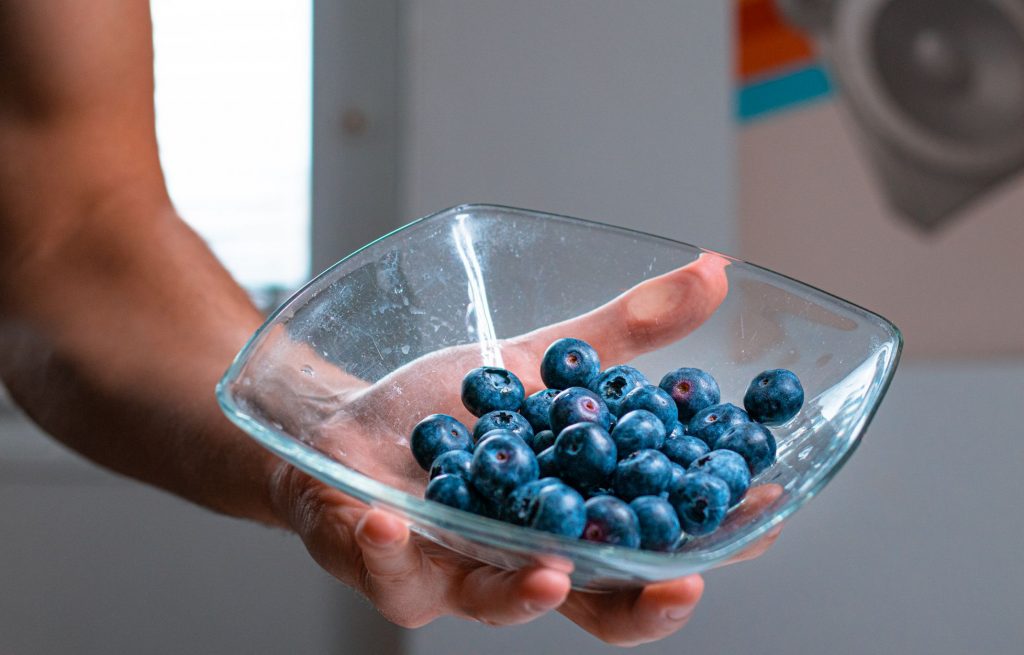
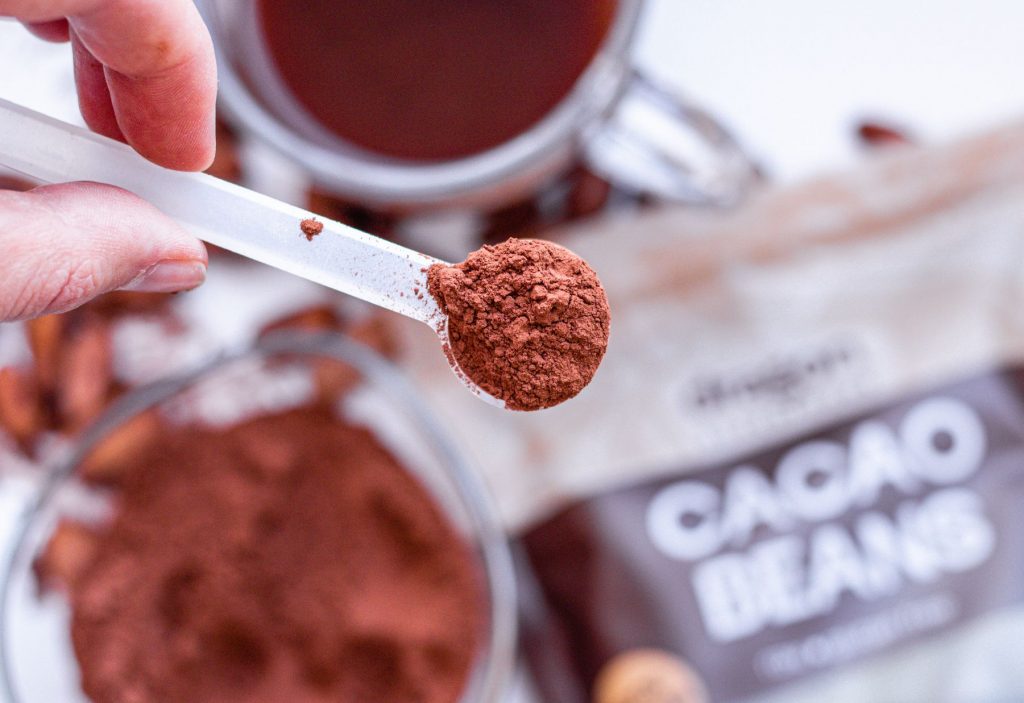
2. Dark Chocolate and Raw Cacao
There is something so satisfying about combining brown chocolaty dessert with coffee, I just can’t wait for my break. For all you coffee and cacao lovers out there, I have some good news.
Dark chocolate, especially the one that’s above 70% of cacao is going to be pretty high in antioxidants. It’s real guilt-free chocolate if you ask me.
Dark chocolate is also pretty rich in fiber, 11 grams per 100 gr. Of chocolate. Plus it is loaded with copper, manganese, magnesium, potassium, zinc, and iron.
The darker the chocolate, meaning the higher the cacao percentage, the less sugary and sourer it will be. But once you get used to what real chocolate and cocoa feel like, you won’t ever want to go back to the sugary milk type.
ORAC Value: Unsweetened cocoa powder has around 55,653, cacao nibs are at 62,100, and raw cacao tops at 95,500
The point is, for dessert, instead of sugary-milk chocolate, get yourself some 85% raw cacao. Add unsweetened cocoa powder to your smoothies, and enjoy some cocoa drink every now and then.
3. Pecans and Walnuts
What healthy food goes great in combination with chocolate muffins and coffee, I’ll wait. If you said nuts, you’re right. For some of the best healthy desserts add nuts or nut flour as a substitute for the regular ones. The texture is just insane.
Pecans are one of the most antioxidant-potent nuts, sitting at the top at 17,940 per 100 grams. Then other nuts like Walnuts (13,541), Pistachios (7,675), Almonds (4,454), Peanuts (3,166), and Cashews (1,948).
Nuts offer a ton of nutrients. Besides being loaded with healthy fats, they also provide a good amount of fiber which is important for digestion, and nuts are a great source of plant-based protein.
Nuts are also loaded with minerals, being a great source of phosphorus, potassium, zinc, manganese, etc. Walnuts also have a good amount of omega-3 fatty acids, as well as alpha-lipoic acid, great for your brain.
You don’t want to overdo nuts because of their high caloric content. You’d also want to peel the skin off some nuts (like almonds) or soak them to reduce oxalate content. Enjoy some with chocolate and coffee next time, you’ll thank me later.

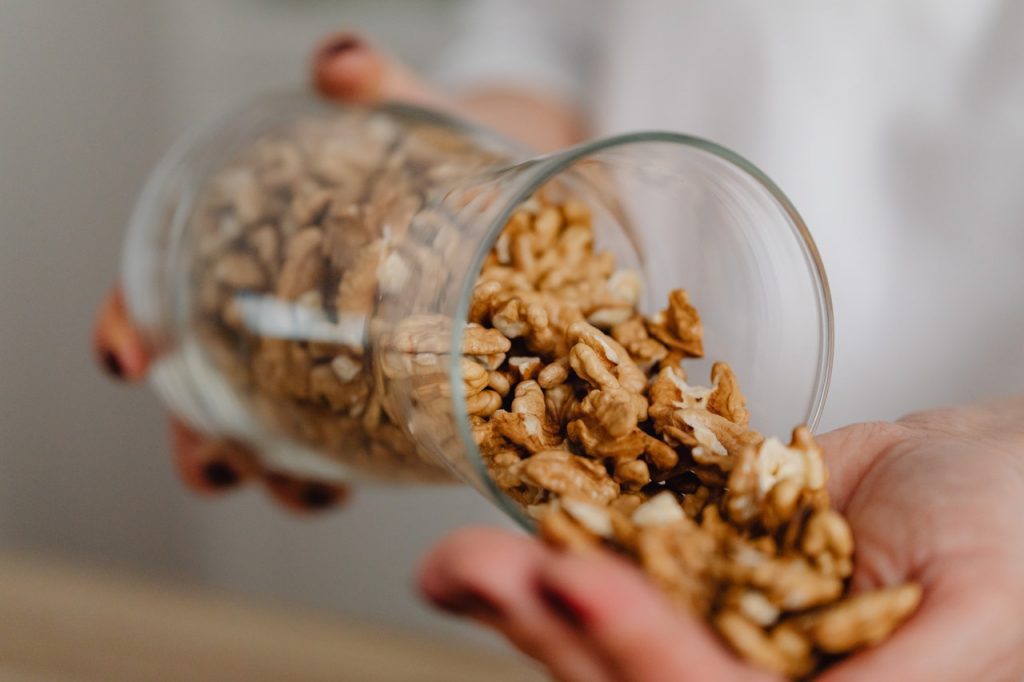
4. Coffee
It wouldn’t be an antioxidant list if we don’t talk about coffee, would it? One of the most powerful antioxidant sources you can and probably are incorporating into your diet.
It’s fair to say that we’re not talking about Vanilla lattes, Irish Cappuccino, or Sugary Frappe, although I enjoy the middle one. We are talking about clean, dark, powerful coffee. Adding sugars, milk or alcohol can count up to additional calories, and if you have 3 cups a day, watch that.
Generally, coffee has a very potent antioxidant content, but there are different coffees you can get. The ORAC value of coffee differs. If you’d look at the highest ORAC Values of all, Coffee Cherry (Cascara) Powder sits at 4th place in the world at 343,900, which is ridiculous.
Some sources rate the coffee powder at around 15,000 to 17,000. The usual Brewed Arabica Coffee, Medium-Roast sits at 2,780 per 100 grams, which is impressive.
There are special, antioxidant-enriched coffees with higher antioxidant potency. Look for Arabica, black and clean coffee. Look for a medium roast, and potentially antioxidant-enriched, with additional mushrooms like reishi, cordyceps, or lions mane.
Fun Fact
The 4th most potent antioxidant source is known to be Coffee Cherry (Cascara) powder with ORAC value sitting at 343,900.
5. Ground Cloves
Another interesting, yet powerful source of antioxidants is ground cloves. They are commonly used as a spice in cooking, for adding additional flavor.
It’s like your common Christmas, wine, a cozy, cinnamon-type of spice that has a bit of sweetness and warmth to it. That was a mouth full.
Ground Cloves sits in 6th place as the most potent antioxidant source in the world. It holds an ORAC value of 290,283.
It is a popular spice also used in Ayurveda, for many of its immune-supporting benefits. As an antioxidant, it is logical that it can fight oxidative stress and reduce inflammation.
Clove oil is also used frequently against bacteria, parasites, and insects due to one very powerful germicide, eugenol.
6. Red Cabbage & Beetroot
Beetroot and red cabbage share similar health benefits, and both have high antioxidant potency. They are known to improve circulation, reduce blood pressure and reduce inflammation.
There’s an interesting amino acid called L-arginine, present in both beetroot and red cabbage. L-arginine increases NO or Nitric Oxide in the body which improves blood flow as it increases the diameter of capillaries. This is why beetroot juice is used for enhancing sports performance.
Raw red cabbage has an ORAC Value of 2,498, but just boiling it can increase antioxidant potency by a bit. Beetroots are also pretty impressive, at 1,776. They also come with other B vitamins, and vitamins A & C.
Pro Tip
Preparing fresh beetroot juice or adding red cabbage to your salad is a good way to bump up your antioxidants, and potentially improve athletic performance and improve blood circulation.
7. Peppermint | Green Mint
No, we aren’t talking about min gum. There are two aromatic plants called peppermint and spearmint. Mint or green mint is what comes as an extract that combines both.
Mint is quite popular for its refreshing aroma, and it is added to different soups, salads, and side dishes, especially rich in the Mediterranean Diet. Most of the breath-freshening products have mint in them, such as chewing gums, toothpaste, mouthwash, etc.
In terms of antioxidant capacity, dried peppermint leaves have a 160,820 ORAC Value, which is quite high. But of course, dried peppermint mints have a very concentrated form of antioxidants, as a spice, we use it in small quantities.
On the other hand, fresh peppermint has an ORAC Value of 13,978, pretty sweet aye? It stands head-to-head with elderberries, ginger root, walnuts, and oregano, so it deserves a spot on this list.
Peppermint tea is one of the best ways to boost your antioxidant status through peppermint consumption. It is known to contain terpenes, flavanones, flavones, and phenolic acid, all-powerful antioxidants.
Aside from fresh breath, you’d probably fight oxidative stress, increase alertness, improve digestion and open up your breathing pathways more, since peppermint is known to shrink swollen membranes.
8. Red Kidney Beans
Red Kidney Beans are one of the foods that surprisingly make the list. As a functional food, you’ll also be looking at the volume of food consumption. For example, we can’t consume 100 grams of coffee or oregano, but 100 grams of red kidney beans seems reasonable, not?
Red Kidney beans stand out at an impressive 8.606 in terms of ORAC Value. You can mix them in salads, add them to a side dish, mix them with pasta, meat or even add them to tortillas.
Black beans are also one of the richest sources of antioxidants when it comes to beans, topping at around 8,494 ORAC Value, while Raw Pink beans are at 8,320.
Beans are rich in fiber which helps with digestion, they are low-fat, relatively high protein and carb food. Beans are a good source of iron, potassium, phosphorus, B6, and magnesium.
Some health benefits expected from red kidney beans include improved cholesterol profile (lower LDL), supporting brain function, maintaining healthy digestion (due to fiber), being rich in protein (plant-based source), and being good for sugar control (source of complex carbs).
9. Golden Apple & Astragalus
To be honest, I didn’t know the golden apple was so golden in terms of antioxidants. It stands head-to-head with Astragalus, one of the most potent anti-aging herbs.
Golden apples are a great source of fiber, having around 5.2 grams per large apple. They are a low-calorie alternative, pretty rich in antioxidants – at 17,933.
Astragalus, on the other hand, is a famous root adaptogen used in Ayurveda, known for its longevity-promoting effects. It supposedly contains a chemical compound known as TA-65 which may control some aspects of aging.
Astragalus has an ORAC Value od 17,773. As if this wasn’t enough, astragalus also comes with many potential health benefits like preventing sickness (colds, flu, respiratory infections,) improving circulation, supporting immune function, supporting heart health, and protecting kidneys and liver.
10. Curcumin, Turmeric & Curry
If you’ve ever seen a bright yellowish-orange spice, it’s probably turmeric, Curcuma, or curry, which are pretty similar.
Turmeric as you know is an intense spice, used in cuisine for adding flavor to foods. It also has many potential health benefits, that mainly come from a bioactive compound, known as curcumin.
Turmeric comes from the root of Curcuma longa, which is part of the ginger family, hence why ginger and turmeric have similar spicy & refreshing tastes. Point is, you’d get the powerful antioxidant, curcumin, in any of these three, it’ll be just a different concentration of it.
The benefits of curcumin range from improved blood flow, improved cardiovascular health, and potent anti-inflammatory properties, to even memory and mood boost, and reduced arthritic pain. Curcumin has also antibacterial and antifungal properties.
In terms of ORAC value, turmeric has different values, and this will range, but generally, it’s slightly above the 100,000 mark, which is quite impressive. Turmeric, I’d give you that.
Curry spices, which use a combination of turmeric, and also contain curcumin, sit at ORAC of 48,504. So, add some to your rice, please.
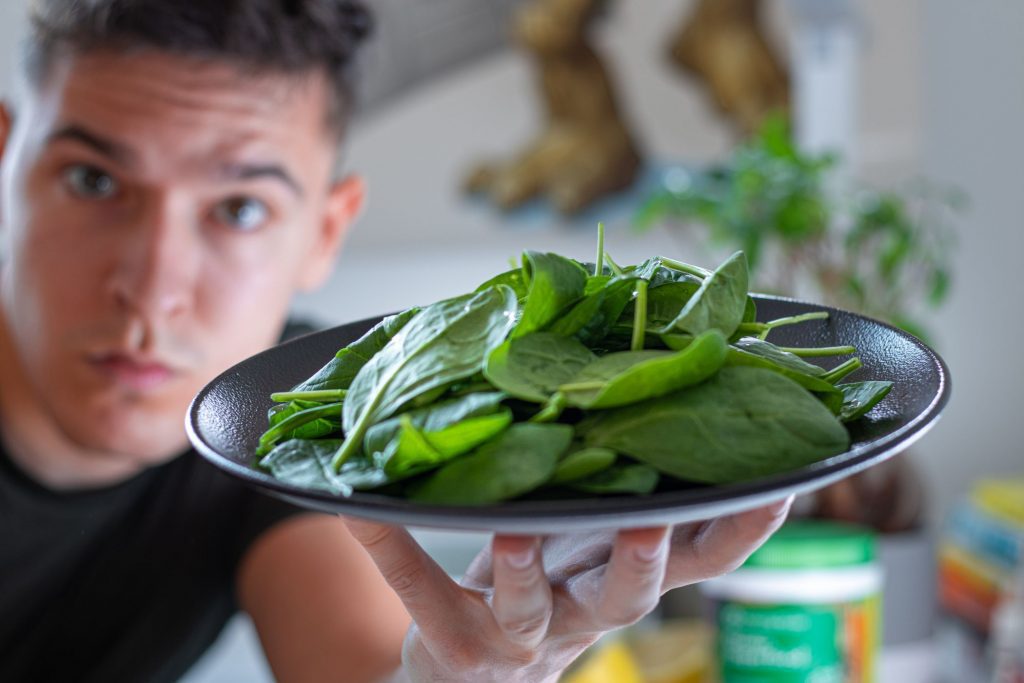
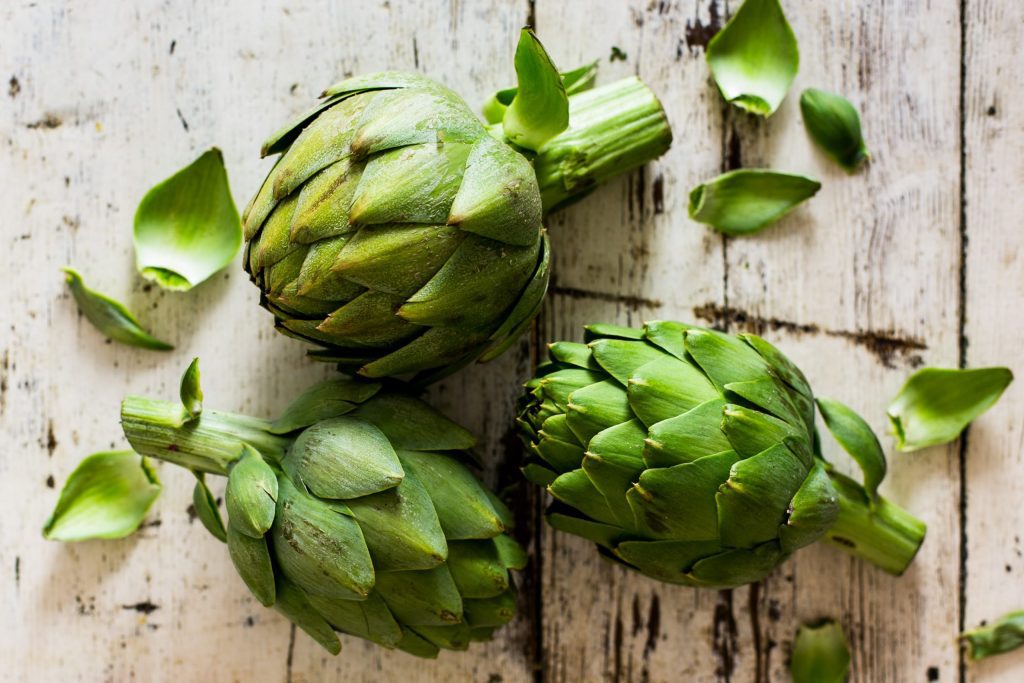
11. Spinach and Artichoke
Last but not least, my top 2 greens, Spinach and Artichoke. Artichoke holds an ORAC value of 9.412 while Spinach is sitting at 1,260.
Both artichoke and spinach contain a good amount of fiber, 6,9 gr., and 2,8 gr., respectively. This can help with stool movement, and digestion and feed the good bacteria in the gut.
Artichoke also contains minerals and vitamins like phosphorus, magnesium vitamin C, and K. It has precious antioxidants like polyphenols, anthocyanins, and even flavonoids.
Contrary to popular beliefs, spinach isn’t winning in the field of iron and protein. Instead, it’s a great low-calorie high-fiber option for a veggie. Spinach also contains lutein and zeaxanthin, two powerful yellow carotenoids, important antioxidants which protect the eye and support vision.
Pro Tip
Don’t overdo your raw spinach, because it contains oxalates. Tips to reduce oxalates are to steam your spinach and squeeze a bit of lemon juice on top. And oh, a thing you should know about artichokes, you should not eat the lower stem and choke parts, it’s not edible.
Food Groups Rich in Antioxidants
As we’ve already seen, there are tons of foods rich in antioxidants. Incorporating some of those in our diet can boost our antioxidant status, meaning we’ll be better equipped to fight off free radicals and oxidative stress.
The main common food groups that are rich in antioxidants are:
| Green Veggies: | Kale, Spinach, Artichoke, Collard Greens, Broccoli, Asparagus, Cabbage |
| Beets and Roots | Beetroot, Swiss Chard, Carrots, Radish, Celery, Parsnips, Maca, Astragalus, Ashwagandha |
| Herbs and Spices | Pepper, Cilantro, Basil, Oregano, Rosemary, Cloves, Ginger, Paprika, Garlic, Cumin Seed |
| Fruits | Golden apple, avocado, berries (blackberry, bilberry, blueberry, cranberry), red grapes, cherry, oranges, papaya, figs, and apricots |
| Beans | red kidney beans, pinto beans, black beans |
| Drinks, Desserts | Dark chocolate, cocoa, cacao, cacao nibs, coffee, tea |
| Nuts & Seeds | Pecans, Walnuts, Almonds, Pistachios, Sunflower seeds, macadamias, hazelnut, sesame seeds. |
How to get enough Antioxidants through a diet
The easiest way to get more antioxidants through diet is to look at the foods above and ask yourself:
- Which ones do you like the most?
- Which high-quality, local products you can get from your stores?
- What’s the most practical way to prepare it?
Once you go through your list, you could:
- Buy your favorite spices and herbs, and add them for flavor. Think oregano, basil, rosemary, chilly, turmeric, etc.
- Pick two snacks that work for you, like carrots and hummus or blueberries with almonds and dark chocolate
- Get yourself clean, antioxidant-enriched coffee, aim for medium-roast and arabica beans. Also, look at some tea alternatives
- Start experimenting with veggies. You might be surprised how well asparagus, broccoli, spinach, and carrots can be cooked and combined
- Swap regular sugars with high-quality, dark chocolate with 75%+ cacao, you won’t regret it
- Eat or drink more citrus fruit (juices), grab yourself 200-400 grams of berries (frozen or fresh), and stack them on your shelf
- Consider adding some nuts or seeds into your Greek yogurt/protein pudding type of combo, you won’t even feel them, they’ll just add some crunch.
- Consider swapping processed vegetable or sunflower seed oils, with avocado, walnut, flaxseed, or olive oil for more omega 3’s
That’s around it, simple enough? Try at least 2-to 3 of these tips and see how it works for you. On to the next one.
conclusion
Antioxidants are our weapon against oxidative stress, they neutralize free radicals. The body makes antioxidants on its own, but as physiological stressors increase and we age, we need external antioxidants we could easily extract from healthy foods. Some of the functional antioxidant-rich foods include berries, coffee, nuts, dark chocolate, green leafy vegetables, roots, herbs, spices, citrus fruits, and beans.


